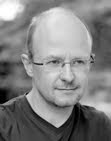Margins

I'm fully absorbed by my work these days. Shuttling up and down to London, to Brussels. Spending an awful lot of time on trains these days. Mostly I don't even have camera with me. The job is all-absorbing. Photography is in the margins only. Two weeks ago I went to Paris Photo. An impressive show in terms of sheer size. But, surprisingly perhaps, with Japan as a guest country I was less enthralled than with Italy last year. Lots of Araki, and then other, not very striking contemporary stuff (Yamamoto, amongst others; I really don't like it). I didn't see much of the classics (there was some Hosoe, some Fukase, some Moriyama but not much). There was no discovery as with Raffaella Mariniello last year. I bought one book from one of the five or six Japanese publishers present at the fair. The workmanship of their productions is always quite marvelous.
I was happy to meet Hans Bol and his wife in Paris. I also bumped into Chae, a Korean photographer who was on the Magnum course.
Other things that happened in the past two weeks: I submitted a new batch of 12 framed pictures for exhibition in the EU Commission headquarters (Berlaymont) in Brussels. I sent in a portfolio of 10 pictures to Réponses Photo for a competition under the banner of "Visions d'Europe". And I compiled a book (15 spreads) that will be printed by Spectrum Photo in Brighton. It was actually part of the Magnum workshop: every participant receives a book with work produced in that week. But I didn't like my photos from the workshop so I filled it with Pakistan images. We'll see. I also received a batch of Blurb holiday albums that have been printed with a disgusting green cast. I hope they are willing to take back the order of 6 books.
I didn't do any shooting lately. Just 3 (120) rolls of snaps in Paris. I used chromogenic Fuji film but the lab put it erroneously in D76 so the negatives came out all underexposed and with a garish colour cast. There is not much to save. The picture above is one of the best (taken with the SWC).




